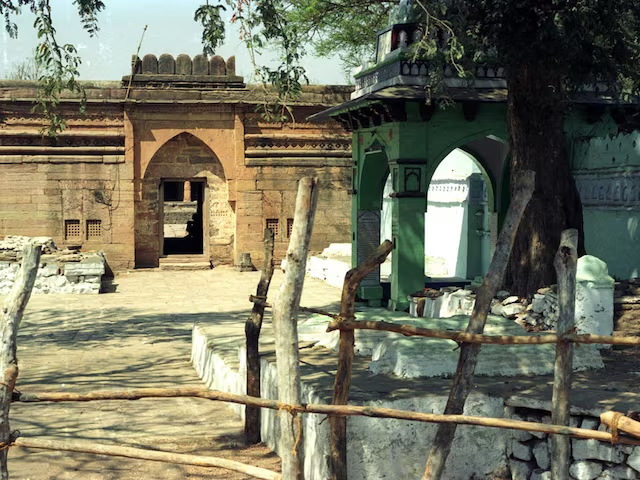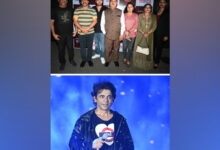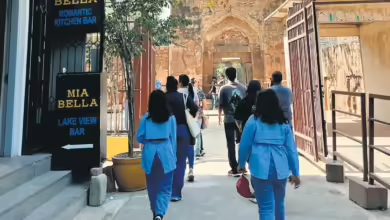Viewpoint | Why India Needs the Bhojshala Survey
Often, being bold backfires. Temple ruins would be a powerful symbol of the Islamic conquerors’ dominance over India, who were determined to establish their dominion over this unbeliever country. Thus, utilizing pillars and other characteristic architectural features of Hindu and Jain temples that they desecrated and destroyed, succeeding Islamic kings constructed mosques, mazhars, and madrassas, beginning with the Quwwat-ul-Islam mosque in the Mehrauli neighborhood of New Delhi in 1193.

The Supreme Court’s decision to uphold the Madhya Pradesh High Court’s order for the Archaeological Survey of India to conduct a “scientific examination” of the Bhojshala in Dhar in order to determine its origins is another example of how that aggrandizing strategy is returning to haunt the present. While Ayodhya, Kashi, and Mathura are often associated with indignation over the replacement of temples with mosques, the unsettling reality is that these locations were not the only ones in medieval India where this occurred.
Although the high court’s and apex’s positions have generated controversy in the usual places, it is good to have clarity on the matter. After all, the people of India should know why the medieval site Bhojshala—whose original name and function are still unknown—is classified as a Monument of National Importance and is overseen and safeguarded by the ASI. As we are all aware, ignoring the reality will not end well.
The fact that namaz and puja are permitted within the complex on Fridays and Tuesdays, respectively, along with Saraswati Puja on Basant Panchami, because of an ASI order from 2003, alludes to a struggle that may ultimately escalate into a full-fledged conflict. Particularly considering that it seems the ASI approved and carried out the puja-namaz order without first learning the true history of the complex and, therefore, the rights of both groups to worship there.
Given that “shala” means location and “bhoj” means food, some Indians would be perplexed as to why a place with a restaurant name would be a flashpoint. They are not depraved idiots; rather, a lot of significant figures have been omitted from school history textbooks, which serve as the majority of Indians’ first and sometimes only source of historical knowledge. Aside from such omissions, it is sometimes taught in schools in such a poor manner that many Indians get disinterested or come to the conclusion that our history is nothing more than a long list of backward customs that are better left forgotten.
Therefore, it would not be shocking if many Indians are still unaware that Maharaja Bhoja was a legendary—not mythical—Parmara monarch of Malwa in the eleventh century and a close friend of the famous Rajendra Chola during the conflict, even months after the Bhojshala dispute made headlines. With 84 volumes published on topics ranging from science to poetry, astronomy to architecture, and war honors to boot, he was a polyglot and polymath. Put simply, a guy of the Renaissance.
Understanding why the Bhojshala quarrel is still relevant 900 years later requires internalizing this information about the Parmara monarch. Being the cultural hub of central India, Maharaja Bhoja’s empire and its capital, Dhar, were naturally home to several temples that he constructed as his authority and reputation increased. Ironically, the hundreds of stone “spolia” that were shamelessly used in the mosque-dargah complex that was eventually given the name Bhojshala were most likely from those exact temples.
Some people wonder where the spolia came from, however according to the Udaipur Prashasti, Bhoja “covered the earth with temples,” and in Prabandha-Chintamani, the Jain monk Merutunga claims that he constructed 104 temples in Dhar alone. The sole surviving temple from the era is the Bhojpur Temple. So, out of boredom, did the Islamic conquerors order carved stones in a variety of sizes and designs? Or was the mosque a pioneering instance of eco-friendly recycling and reuse?
Those who raise doubts should be sent to Vidisha, which is 300 km distant, to examine Vijayamandal, which is ironically now called Bija Mandal and is located next to the well-known Heliodorus Pillar. Ironically, the massive pedestal supporting the multi-pillared, eleventh-century Bija Mandal still stands, despite its disappearance. And today, perched upon it, is a poorly constructed, sealed mosque from the 17th century, with pillars on its outside that belong only in a temple. The lesson is still very evident today.
The many stone pillars, statues, ornamental carvings, and other architectural components that are arranged in an orderly fashion around the area, like a warehouse, make it easy to envisage the once-soaring majesty of the legendary Bija Mandal. These, together with the plinth that is empty, provide as unmistakable evidence of the demise of several temples, some of which had their spolia utilized for Bhojshala. Its demolishment and subsequent incorporation into Islamic architecture is evident, but what of Bhojshala’s more recent past?
In 1935–1936, revenue records under the survey number 313 old (604 new) of village Dhar classified the premises as “Bhojshala & Temple,” according to papers produced by the state government and quoted in the HC judgment. A masjid was not mentioned. The “Bhojshala” could not be waqf property either, since it was held by the state and administered by the ASI since it was designated as a protected monument by the Monuments Act, 1904 and again in 1958.
Importantly, the papers indicate that, according to the Bhojshala, the dargah of Hazrat Kamaluddin Chishti (Kamal Maula) lies on survey number 302, not 313. Furthermore, there was no proof that namaz was said there before to 1935. Therefore, the MP Government argued that because the buildings had been under ASI administration since 1905, the 1935 decree issued by the Dewan of the princely state of Dhar to allow a day of namaz and dua there (for the health of the then king) was unlawful.
Thus, how and why did the formerly temple complex—now known as Bhojshala—become the mosque and dargah known as “Kamal Maula”? The solution lies in history. Beginning in the 12th century, Islamic Sufi preachers from the northern subcontinent began to pay attention to Central India. Additionally, Chishti order members were sent from Delhi to reside in central Indian Hindu cities such as Ujjain, Dhar, Mandu, Chanderi, and so on in order to “spread the word” starting in the 13th century.
A pupil of Nizamuddin Auliya, Kamaluddin came in Dhar at the end of the 13th century, more than two centuries after Bhoja’s demise, and died there in 1331. Amir Khusro’s chronicle states that during Kamaluddin’s central Indian mission, a massive army under the command of Alauddin Khilji, the then-Sultan of Delhi, defeated Malwa and murdered Mahakaladeva, the Parmara monarch who had fled to Mandu.
The great iron pillar at Dhar was also broken by Multani, and the three sections now rest horizontally on different supports. This is significant. This iron pillar is identical to the well-known one in Delhi and was most likely built by Bhoja, as Malwa was a hub for metalworking during his era. Although its origin is unknown, it is likely due to the nearby “Lat (pillar) Ki Masjid,” which was constructed in 1405 and primarily constructed with temple spolia points.
Therefore, the fact that an earlier hypostyle (multi-pillared, flat-roofed) mosque was also constructed in what is now known as Bhojshala in Dhar using spolia from demolished temples cannot be a coincidence—or an example of secular, environmentally beneficial recycling. There is an inscription that dates the mosque’s construction to between 1310 and 1320. Additionally, Kamal Maula Masjid got its name from the construction of his tomb and dargah next to it when Sufi missionary Kamaluddin died away in 1331.
The question of whether Saraswati (Vagdevi) had a temple at the location of the Bhojshala complex is one aspect of the ongoing argument. There is no concrete evidence to support the claim that a statue of a devi kept in a UK museum represents the ruling god. But there is enough evidence to assume that where the present complex is located, there was a non-Muslim place (or places) of worship due to the abundance of inscriptions found on repurposed temple ruins. In 2024, no poll can refute that.
at addition to Bhojshala and many other locations, such as Bija Mandal, the disagreements at Kashi, Mathura, and Ayodhya ultimately come down to acknowledging what took place. The purposeful employment of spolia at the time such atrocities were committed made sure there was no room for a believable denial in subsequent decades, therefore repudiation is pointless. The only thing that may heal the wounds of ages and bring about calm, mutually agreeable solutions is sincere recognition.






